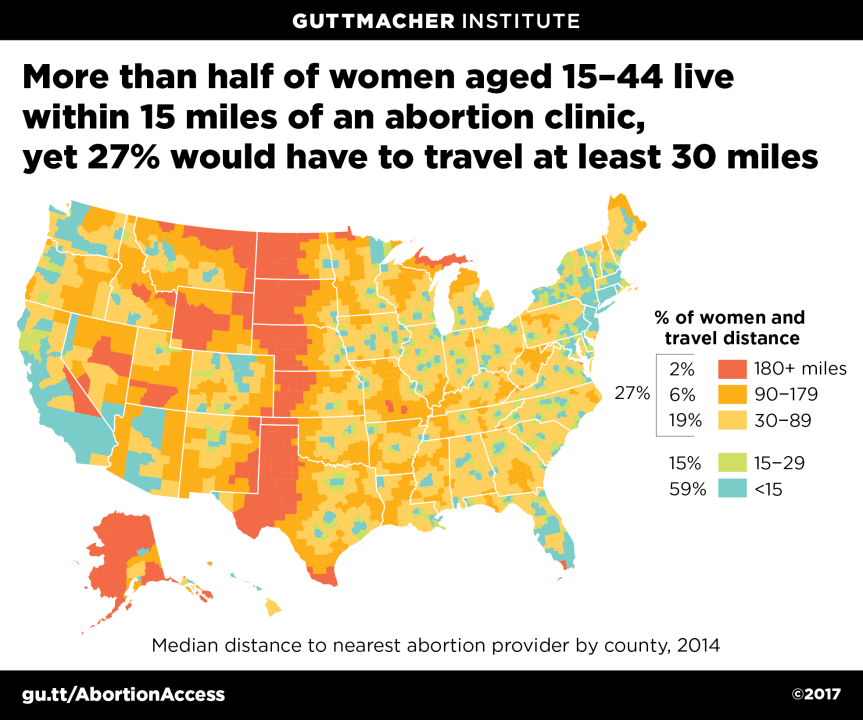Many women in the United States would not have to travel long distances to reach the nearest abortion clinic, according to a new analysis by Guttmacher Institute researchers Jonathan Bearak, Kristen Burke and Rachel Jones, just published in The Lancet Public Health. Nationally, half of all women of reproductive age lived within 11 miles of the nearest abortion clinic in 2014. However, a substantial minority of women, particularly those in rural areas, lived significantly farther away. One in five women across the country would need to travel at least 43 miles to reach the nearest abortion clinic.
"Women and abortion clinics are both concentrated in urban areas, so it is not surprising that most women live relatively close to an abortion clinic," says Jonathan Bearak, lead author of the study. "However, distance may be a significant barrier to accessing abortion care for the substantial minority who live farther away, and especially for economically disadvantaged women, who make up the majority of abortion patients."
The researchers combined clinic location data from the Guttmacher Institute’s 2000, 2011 and 2014 Abortion Provider Census with population data from the U.S. Census Bureau in order to conduct the first-ever study of the distance to the nearest abortion provider for all U.S. women aged 15–44. State- and county-level maps are available as part of this analysis.
In the three states with the longest distance to travel overall—Wyoming, North Dakota and South Dakota—at least half of women of reproductive age lived more than 90 miles from the nearest clinic providing abortion services in 2014. Even in rural states, women and clinics were generally concentrated in urban areas, and the researchers found wide disparities in access between urban and rural women living in different parts of the same state. For example, women of reproductive age in Alaska lived an average of nine miles from the nearest clinic. However, 20% of women in Alaska would have had to travel more than 150 miles to access care.
Geographic disparities in abortion access have persisted since at least 2000, according to the analysis. However, from 2011 through 2014, state legislatures aggressively targeted abortion access and enacted 231 new abortion restrictions. While there was little change during this period in the distance women lived from the nearest clinic in most states and counties, the average distance to the nearest provider increased by more than 30 miles in numerous counties in Texas, Missouri, Iowa and Montana. In Texas, 20% of women of reproductive age lived at least 89 miles from the nearest provider in 2014, compared with a distance of at least 33 miles in 2011. This increase was likely due to the implementation of a restriction in 2013 that resulted in the closure of more than half of the abortion clinics in the state.
The authors note that distance is only one of a number of factors that can affect access to abortion. For many, traveling to a clinic, even if it is nearby, means having to take time off from work and arrange for transportation and childcare. In some states that have waiting periods, women have to make the trip multiple times or stay overnight. Even if a woman lives relatively close to a clinic, she may not be able to obtain care if she is unable to use her health insurance or find the money to pay for an abortion.
"Poor and low-income women and those who live in rural areas are often hit hardest by state restrictions that exacerbate long-standing inequalities in abortion access," says Megan Donovan, Guttmacher policy expert. "The ability to obtain needed reproductive health care services, including abortion, should not be determined by a woman’s zip code."
"Disparities and Change over Time in Distance Needed to Travel to Access an Abortion in the USA: A Spatial Analysis," by Jonathan Bearak, Kristen Burke and Rachel Jones, is available online in The Lancet Public Health.
